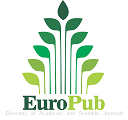Reducing Livestock Greenhouse Gass Emissions by Forage Cultivation at Selobanteng, Situbondo, East Java, Indonesia
Abstrak
Cattle is the strategic commodities in Selobanteng Village, Situbondo, East Java. Based on population monograph data, total cattle population in Selobanteng was recorded around 23.35% of total cattle population in Banyuglugur District, Situbondo Regency. The efforts to reduce greenhouse gas emissions on livestock is through the planting of forage cultivation, which has a measured area and scheduled harvest time. In this way, the age of the forage plants will continue to regenerate so that they can periodically increase carbon absorption. This problem is answered by implementation of forage cultivating. This research was observed at Selobanteng, Banyuglugur sub-district, Situbondo district, East Java. Cattle population was recorded in April-June 2022. The ability of carbon absorption from the forage cultivation area was converted from February to September 2022. Greenhouse gas emissions from cattle, biomass and carbon from forage estimation refers to the Intergovernmental Panel on Climate Change - Agriculture, Forestry and Other Land Use. Total cattle population at Selobanteng was 1,230 cows which was equivalent to 674.6 animal units. Total greenhouse gas emissions based on livestock population is 81.52 Gg CO2-e/year. The forages planted in this program were calliandra, lamtoro, gmelina, corn, banana, rice, and elephant grass. The absorption value of total carbon emissions from forage were 137.68 Gg CO2-e/year. Surplus value of carbon absorption were 56.16 Gg CO2-e/year. Planting forage provides positive benefits for the environment to increase carbon absorption.















